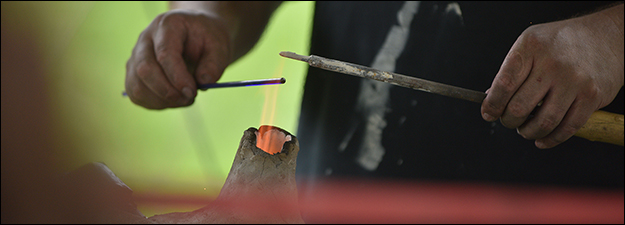Enclosure, Transgression, and Scandal in Medieval Nunneries
Sponsoring Organization(s)
Société d'Études Interdisciplinaires sur les Femmes au Moyen Âge et à la Renaissance (SEIFMAR)
Organizer Name
Laura Cayrol-Bernardo
Organizer Affiliation
École des Hautes Études en Sciences Sociales, Paris
Presider Name
Stella Ferrari
Presider Affiliation
Univ. degli Studi di Milano
Paper Title 1
Formative Spaces: Making Female Ascetics in Early Medieval Iberia
Presenter 1 Name
Jamie Wood
Presenter 1 Affiliation
Univ. of Lincoln
Paper Title 2
Call the Mid-Wife? A Pregnant Woman Seeks Care at an Anglo-Saxon Nunnery
Presenter 2 Name
Victoria Kent Worth
Presenter 2 Affiliation
Univ. of Massachusetts-Amherst
Paper Title 3
For Fear of Scandal: Bishops, Nuns, and Enclosure in the Fourteenth-Century Crown of Aragon
Presenter 3 Name
Michelle Herder
Presenter 3 Affiliation
Cornell College
Paper Title 4
Reassessing Enclosure in Northwestern Iberian Nunneries (Eleventh-Fourteenth Century)
Presenter 4 Name
Laura Cayrol-Bernardo
Start Date
12-5-2016 1:30 PM
Session Location
Fetzer 1045
Description
Traditional historiography insisted on the strict claustration of women religious, limiting the transgression of the rules of enclosure to a few particularly scandalous specific episodes. Such a view is the result of the study of legislative, statutory and canonical sources, regulations which constantly try to define a way of life that was not generally followed. However, the analysis of the documentation related to everyday convent life shows a very different reality. Medieval nunneries were intimately linked to the social, economic, political, and intellectual realities of their day, and women religious maintained frequent relations with the outside world – be it to the priests in charge of the cura monialium; the convent’s environment; or the nuns’ familial and social networks.
This session aims to bring together scholars from different disciplinary and methodological backgrounds working on women religious’ enclosure during the High and Late Middle Ages. We hope to address gaps in current research and to raise a number of key questions, in order to:
- Draw attention to the frequent differences between the information regarding female monastic enclosure contained in prescriptive sources and in the documents of practice.
- Highlight the extraordinary permeability of nunneries during the Middle Ages and the role played by women religious beyond the cloister.
- Define which types of transgressions of female monastic enclosure were considered scandalous, the way these situations were faced and their place in the collective imagination.
- Analyze specific cases in which strict claustration was applied and the positions adopted by the nuns in these situations.
Laura Cayrol-Bernardo
Enclosure, Transgression, and Scandal in Medieval Nunneries
Fetzer 1045
Traditional historiography insisted on the strict claustration of women religious, limiting the transgression of the rules of enclosure to a few particularly scandalous specific episodes. Such a view is the result of the study of legislative, statutory and canonical sources, regulations which constantly try to define a way of life that was not generally followed. However, the analysis of the documentation related to everyday convent life shows a very different reality. Medieval nunneries were intimately linked to the social, economic, political, and intellectual realities of their day, and women religious maintained frequent relations with the outside world – be it to the priests in charge of the cura monialium; the convent’s environment; or the nuns’ familial and social networks.
This session aims to bring together scholars from different disciplinary and methodological backgrounds working on women religious’ enclosure during the High and Late Middle Ages. We hope to address gaps in current research and to raise a number of key questions, in order to:
- Draw attention to the frequent differences between the information regarding female monastic enclosure contained in prescriptive sources and in the documents of practice.
- Highlight the extraordinary permeability of nunneries during the Middle Ages and the role played by women religious beyond the cloister.
- Define which types of transgressions of female monastic enclosure were considered scandalous, the way these situations were faced and their place in the collective imagination.
- Analyze specific cases in which strict claustration was applied and the positions adopted by the nuns in these situations.
Laura Cayrol-Bernardo


